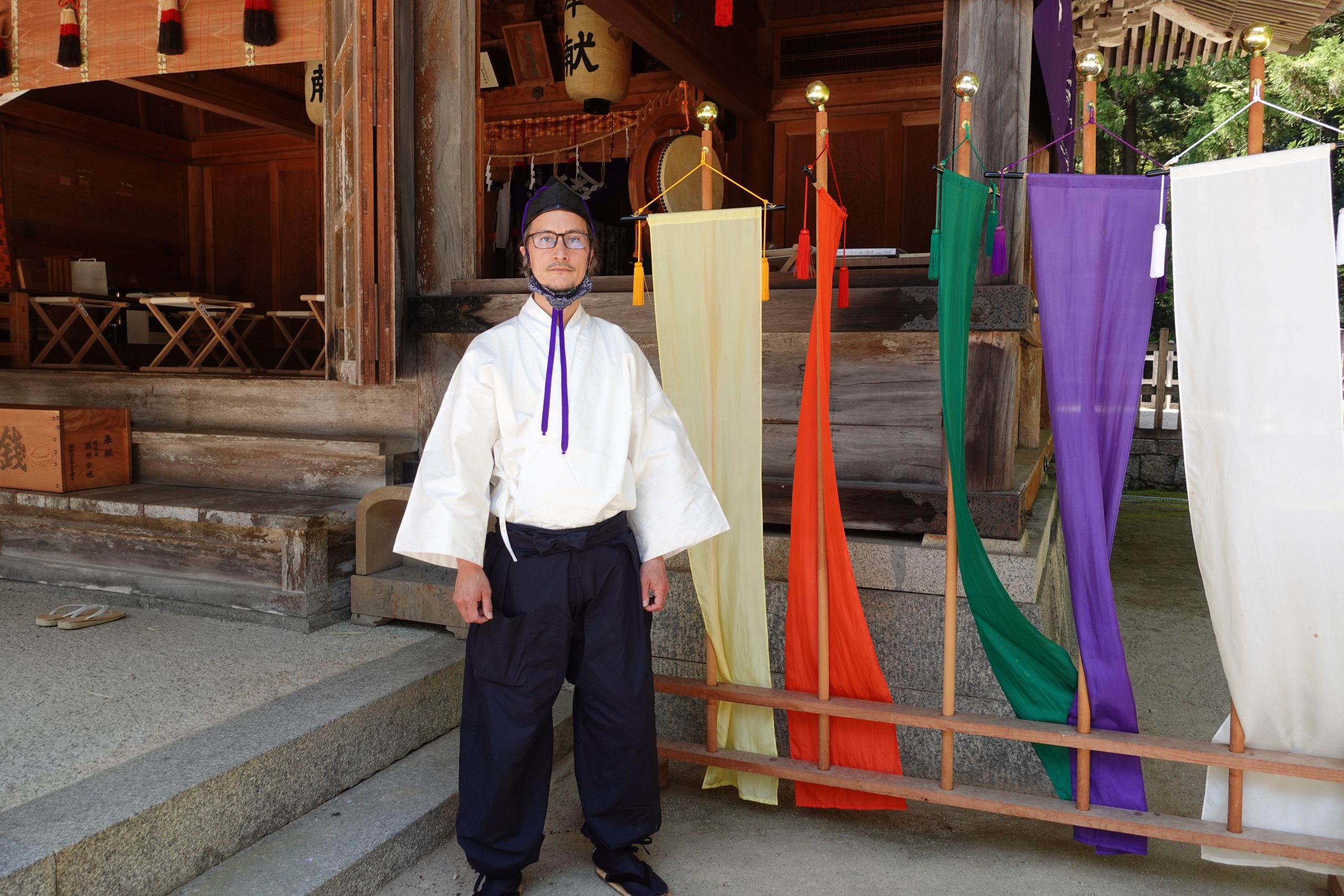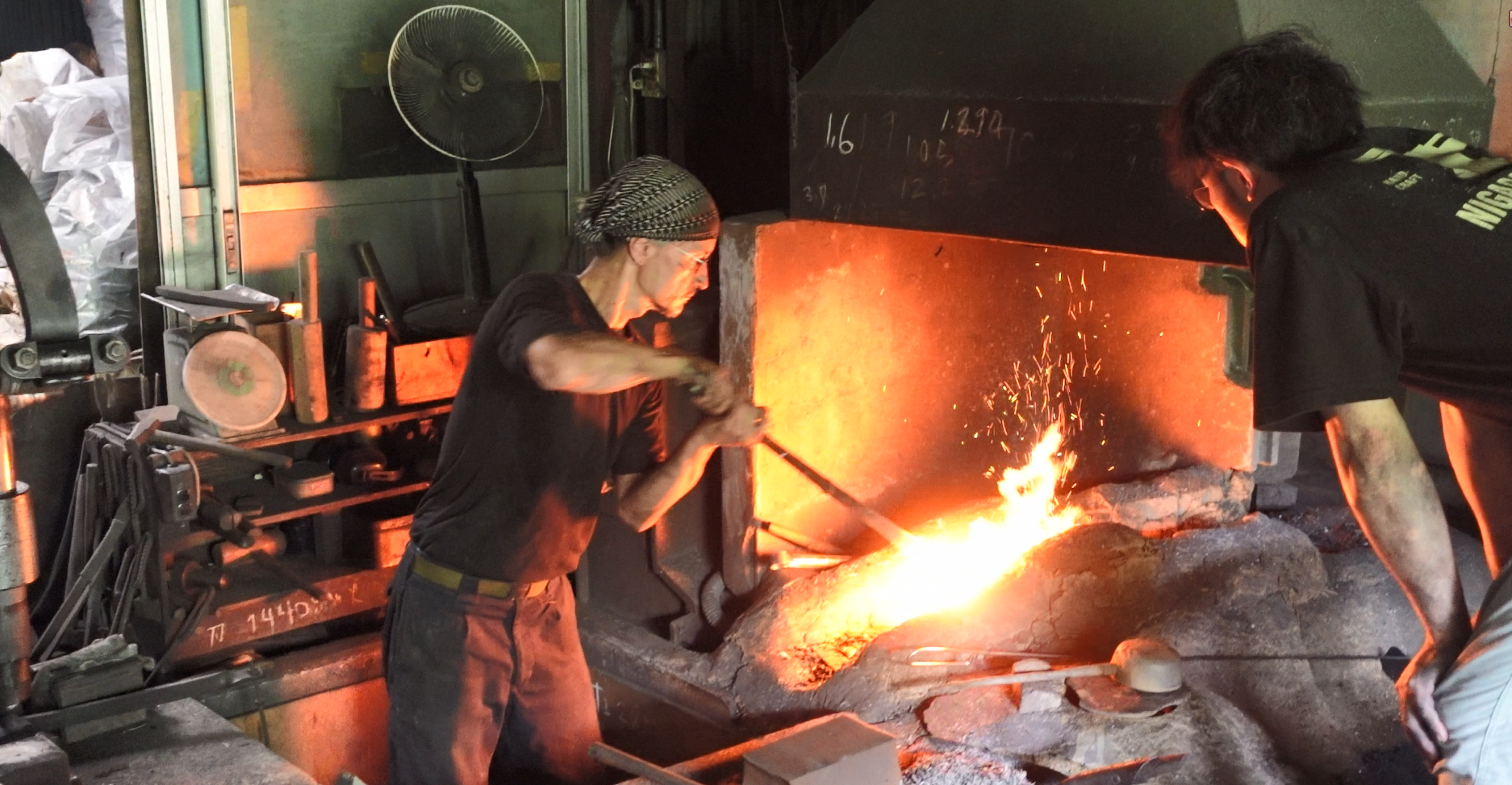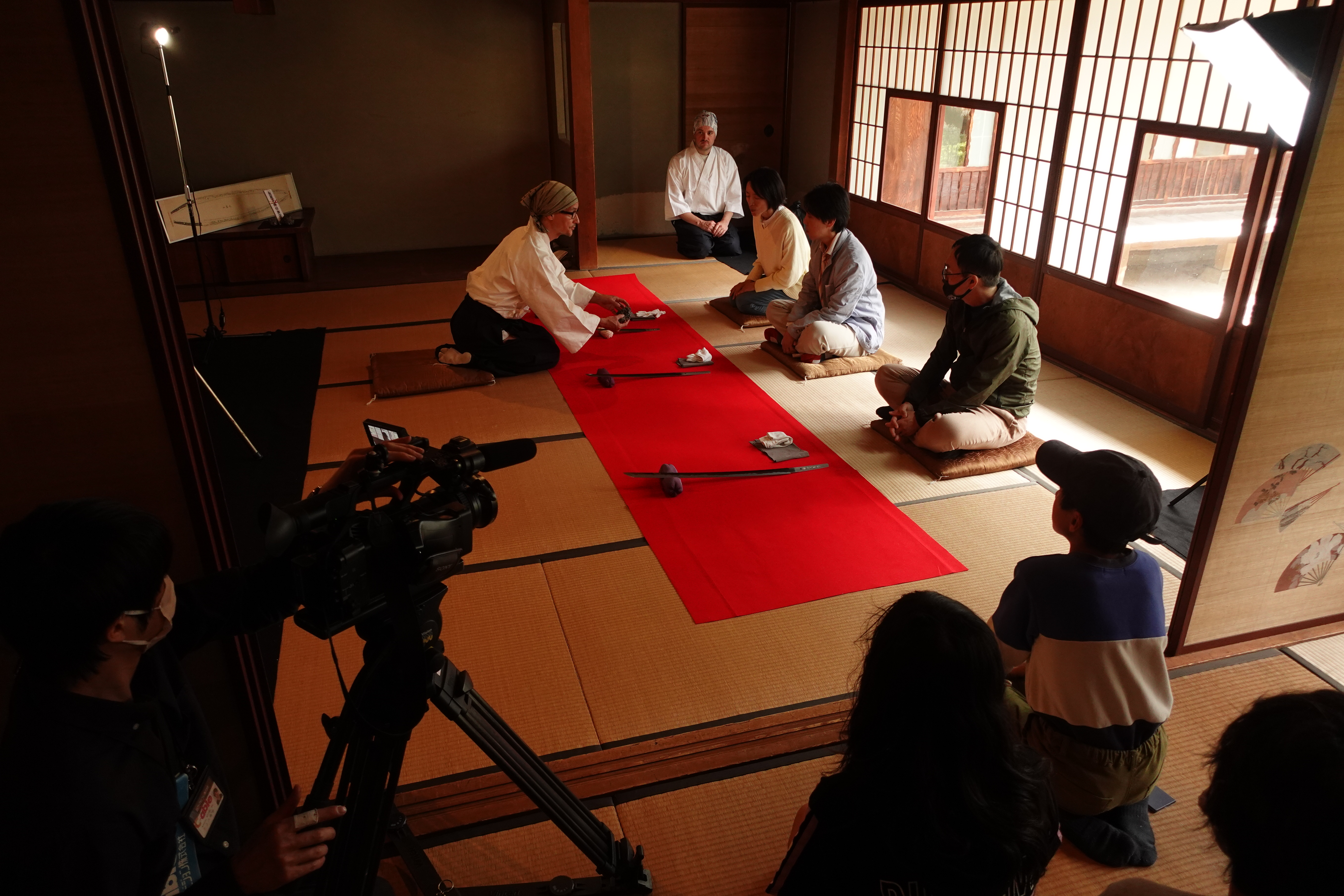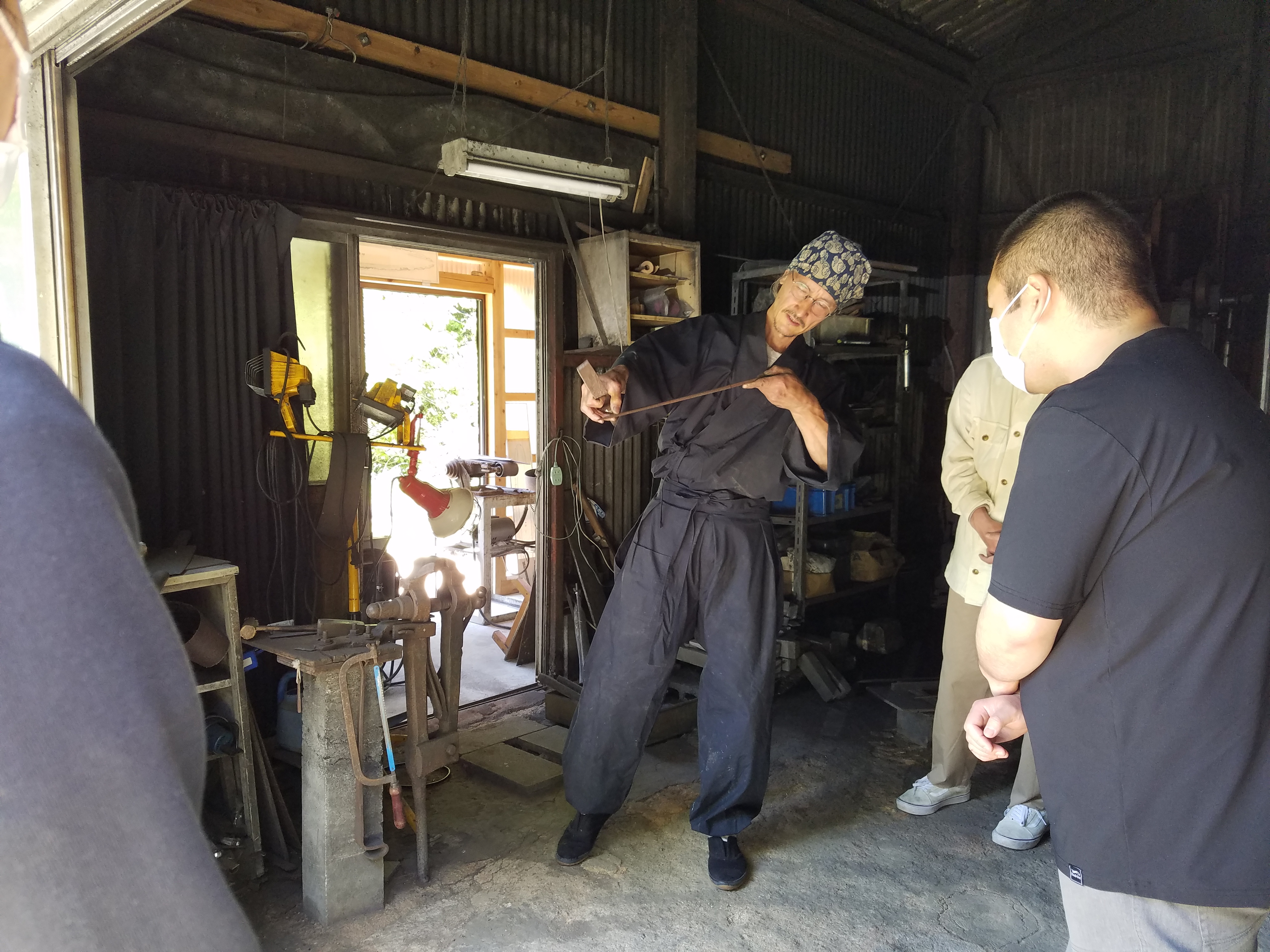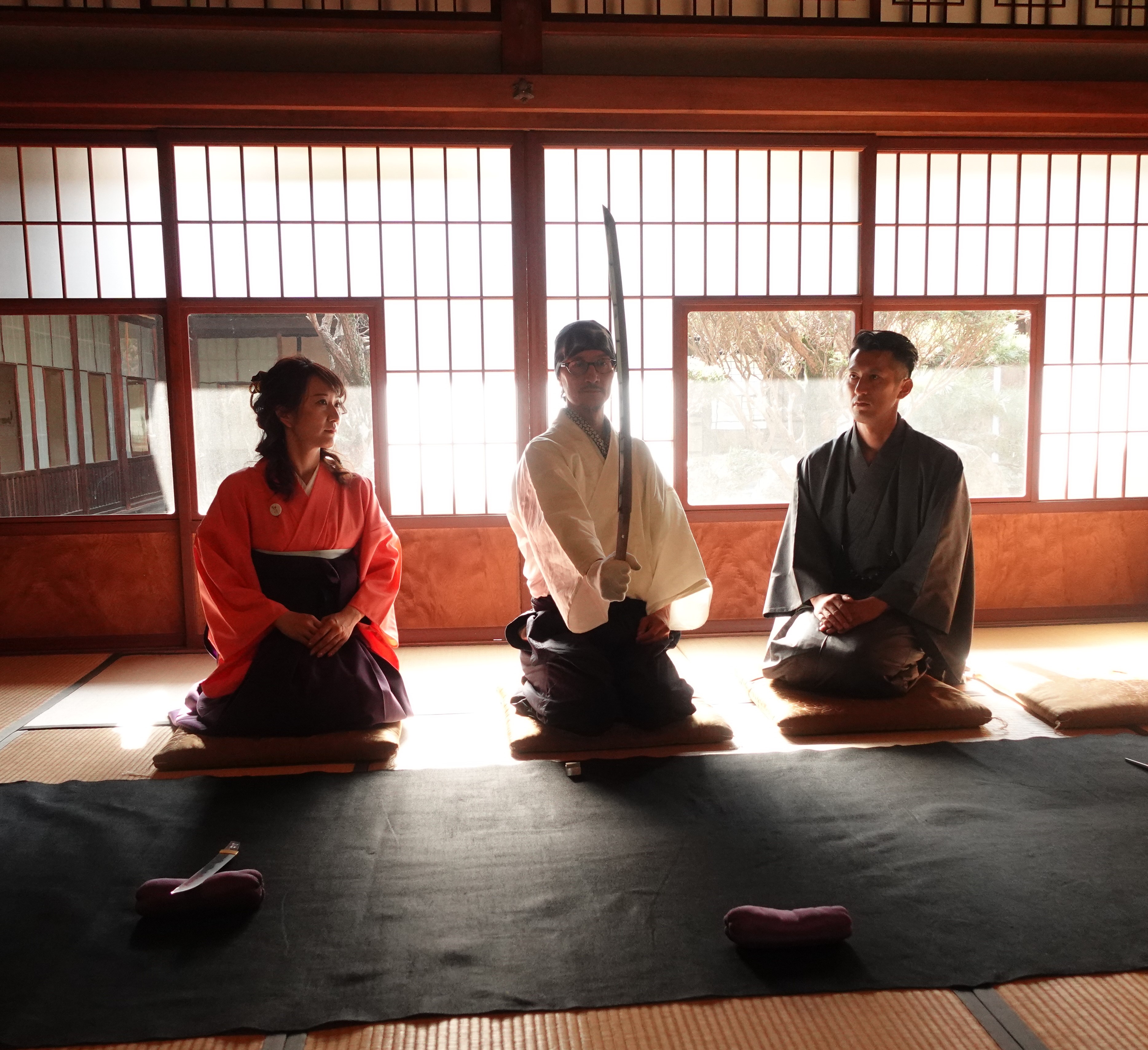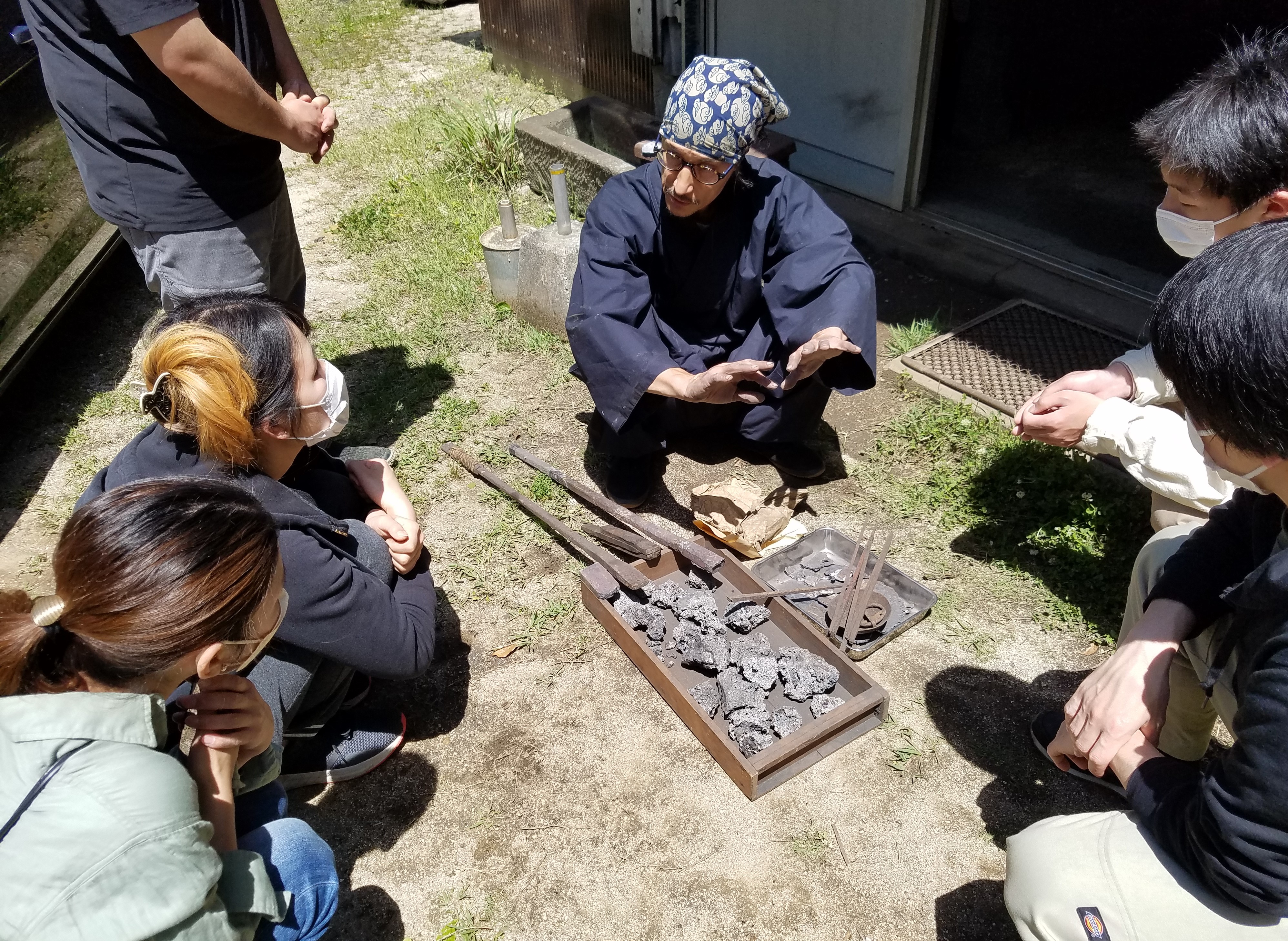This article was written by “La Spada”.
The goddess Kanayago is the granddaughter of “Izanagi Nomikoto” and “Izanamino Mikoto” in the Nihon Shoki, and is the child of “Kanayama Hikomei” and “Kanayama Himemei”. She is the creator of iron (gold) and the guardian deity of iron (gold). Since she is said to be the goddess who taught people the technique of “Tatara iron making”, which is the old-fashioned iron making method in Japan, she has gathered the faith of people who have been involved in iron making since ancient times. The Shintai is enshrined at Kanayago Shrine in Nishihida, Hirose-cho, Shimane Prefecture, and behind it is the Okumiya, which is said to be the land of Kanayago God.

人々が奉納した玉鋼が積まれてある
“Kanayago Myth” and Katsura Tree
Kanayago went down to Iwanabe, the land of Harima, where the villagers were begging for rain. Then, in order to teach people about the safety of the people and the abundance of five grains, he made all kinds of goldware and made pots with rocks.
However, because there were no mountains to live in, he rode an egret to the west, arrived at the forest in Izumo no Kuni, and rested his feathers on the “Katsura Tree.” After that, Kanayago became the chief engineer of Murage and “Tatara Ironworks” in this area. Charcoal and iron sand are blown with a bellows, and there is no limit to the amount of iron that can be squeezed.
Kanayago Shrine Historical Abbreviation

Yasha Yukawa studied “Kanayago myth” during his training as a swordsmith in Japan. Since then, he has respected and worshiped the mythical goddess and the mysterious meaning of the “Katsura tree” that she shook herself when she arrived here.
What is “Tatara Ironworks”?
The ancient Japanese iron-making method that has been practiced since ancient times is called “tatara iron-making”. In particular, Okuizumo and the surrounding area were the main production areas. It uses iron sand collected from granite as a raw material, and uses charcoal called “Tatara charcoal”, which is made from wood grown in a fuelwood forest (Shintanrin). Iron sand and tatara charcoal are repeatedly poured into a furnace made of kiln soil, and a blower called a bellows blows the wind to make Japanese iron.
With the changing times, “Tatara Steelmaking” was once cut off, but with the cooperation of Hitachi Metals, Ltd., the Japan Art Swords Preservation Association is still operating as “Tatara”. .. There, the chief engineer Murage plays a central role in the operation, which lasts about 70 hours three days and nights, two or three times in winter.
Gift of “Tatara Steelmaking”: “Tamahagane Appearing in Kera”
Murashita gradually manipulates and balances the raw materials “iron sand” and “tatara charcoal”, the “kiln soil” that makes the furnace, and the “wind” and “flame” that are sent from the bellows. In the furnace, the refined iron lump “bellows” is grown.
The soil of the furnace and iron sand are fused, and the sword that grows like a living thing while eroding the furnace wall eventually becomes a mass with a width of about 1.2 m. “Tamahagane” is generated in this hook. “Tamahagane” is born when “iron sand and tatara charcoal”, which is a local resource of Okuizumo, meets “fire” and “wind”, which are elements of the natural world.

In the precincts of Kanayago Shrine, there are many giant swords excavated from the neighborhood, and you can get a glimpse of the prosperity of the iron-making culture that has been practiced in this region.
In the old “tatara ironmaking” technique, there was a method called “pig iron” to make pig iron with a high carbon content, and a method called “hog push” containing “tamahagane” with a low carbon content. Pig iron and kitchen knives are processed into farm tools and kitchen knives, and the finest tamahagane, which can only be obtained from a lump of knives, is forged by a swordsmith to become a Japanese sword.
